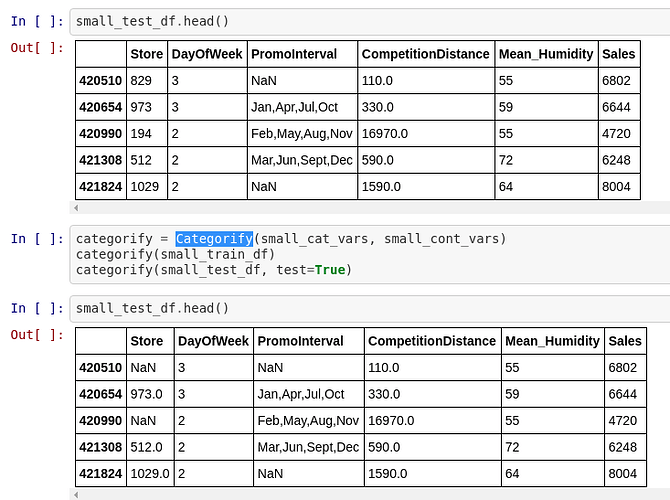The output of the convnet was a 37x1 vector, which was the result of a dot product between a 512x1 vector and a matrix 512x37. How did we get a 37x1 vector if the dimensions doesnt match?
Quick question.
In https://github.com/fastai/course-v3/blob/master/nbs/dl1/lesson6-rossmann.ipynb how come the Store values change after running Categorify? Some become floats and others become NaNs
For anyone searching for where to find Jeremy’s detailed explanation of how the data for Rossmann competition is engineered in the rossman_data_clean.ipynb, here is a link for that:
This is from the 11th lesson of Fast.ai’s Machine Learning course from 2018.
You can also have a look at lesson 12 for further insights on the Rossmann competition.
You can always decompose the one-big-command and see where the error occurs.
Example below
data = TabularList.from_df(train, path=path, cat_names=cat_names, cont_names=cont_names, procs=procs);
data = data.split_by_idx(idx_of_valid_set);
#data=data.split_none()
data = data.label_from_df(cols=dep_var, label_cls=FloatList, log=take_log);
data = data.add_test(testTL);
data = data.databunch();It adds an extra dimension to the object.
Why? Because they way tensors are used in Pytorch, as always a batch (list) of something.
You can see it this way maybe
a=Tensor([1,2,3] )
a
> tensor([1., 2., 3.])
a.shape
> torch.Size([3])
b=a[None]
b
> tensor([[1., 2., 3.]])
b.shape
> torch.Size([1, 3])
Note the extra “[ ]” in tensor([[1., 2., 3.]]). It’s like a list inside a list, therefore has a +1 dimension.
Hi were you able to figure this out? I am trying to use a test set with tabular_learner.predict( ) and have no luck
